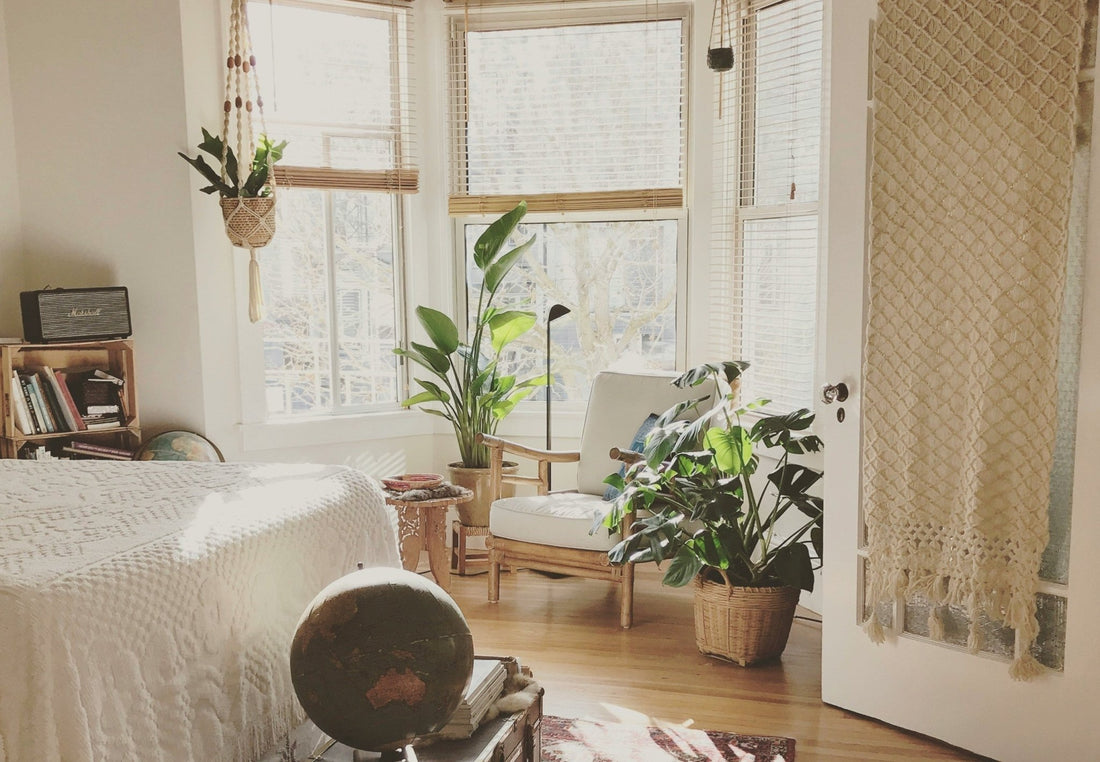
How to Test the Air Quality in Your Home
Share
Lately, many U.S. cities are facing worse air pollution because of factors like wildfires and a lot of city pollution. This underscores the importance of testing for air quality in homes.
Short bursts of poor indoor air quality inside can annoy your eyes, nose, and throat. But if you're breathing poor air quality over a long period, you risk getting serious lung and heart diseases.
How to Test Air Quality in Your Home
To ensure a safe home, you can use indoor air quality test tools. You can use any home air quality test or hire air testing professionals, but most homeowners will find that a simple indoor air quality monitor works just well.
Here’s how to how to test air quality in your home:
Pick the Right Monitor
Choose an air quality monitor that detects specific pollutants, such as volatile organic compounds, PM2.5, and carbon monoxide.
Position the Monitor Properly
Place your air quality monitor in a room you use often, and keep it away from known pollution hotspots like kitchens or bathrooms, where gas appliances may affect readings.
Read the Data
Regularly check the information from your device. Many monitors give real-time readings and explain the levels through a connected app.
You can have your home's air quality measured continuously for optimal results.
Take Action
If the air quality monitor shows high pollutant levels or poor air quality test results, ventilate your home or look into possible pollution sources, like mold spores growth, gas stoves, or poor ventilation.
Improving Air Quality with Good Air Filters
Top-quality air filters are a smart move for cleaner indoor air. They trap pollutants and keep them from circulating in fresh air.
Here's how to choose the best air filters:
Know Your Filter Options
HEPA filters can eliminate 99.97% of airborne particles, including pet dander and particulate matter, making them extremely reliable.
Also, activated carbon filters are great at getting rid of gases and odors, especially from natural gas appliances.
Evaluate the MERV Rating
The effectiveness of filters is measured by the minimum efficiency reporting value. In homes, a MERV rating of 8 to 13 is sufficient for proper filtration without hindering airflow.
Change Filters Regularly
Switch HVAC filters regularly for peak performance. Although the timing can vary based on the type of filter you have, a general rule is to change them every 90 days to avoid poor IAQ.
For a broad range of air filters, look at what Atomic Filters offers.
Other Strategies for Better Indoor Air Quality
Aside from regular home air quality tests, air ducts and filtration, here are more ways to improve indoor air quality:
Increase Air Flow
Crack open a window when it’s nice out or opt for trickle vents to cut down on indoor air quality issues.
Bring in Some Greenery
Plants such as spider plants and peace lilies are good at soaking up pollutants and can help freshen up your indoor air.
Cut Down on Pollution at the Source
Opt for cleaning products that are free from volatile organic compounds, keep moisture levels in check to stop mold spores growth, and make sure your gas stove is in good working condition and vented outside.
A carbon monoxide detector is crucial in homes with gas stoves or natural gas heating, as it helps detect poisonous gas before it reaches dangerous levels.
FAQ: Testing and Improving Indoor Air Quality
How often should I check my home's air quality?
Continuously monitoring your home's air quality with an electronic home test device is recommended. Use simple home air quality tests seasonally or when you spot more dust, unusually high humidity levels, or strange smells like a musty odor that could signal mold growth.
These indicators can lead to more serious health issues if not addressed quickly.
What is the ideal air filter for my home's HVAC system?
Picking the correct air filter for your HVAC system hinges on your health needs—if you struggle with allergies or asthma, look for HEPA filters or ones with higher MERV ratings to catch finer particles. This will help reduce harmful particulates and lower the risk of developing health problems related to poor air quality.
For everyday use, filters rated MERV 8-12 generally do the trick, offering a good mix of airflow, filtering capability, and affordability.
Conclusion
Knowing how to avoid poor indoor air quality in your home is key to keeping your space healthy and preventing health issues.
Equip yourself with the right tools, install carbon monoxide detectors, perform air quality testing, and invest in air purifiers to fend off air pollution's downsides.
Stay on top of air filter changes to ensure your air stays fresh. For filters that improve home air quality, visit Atomic Filters.
